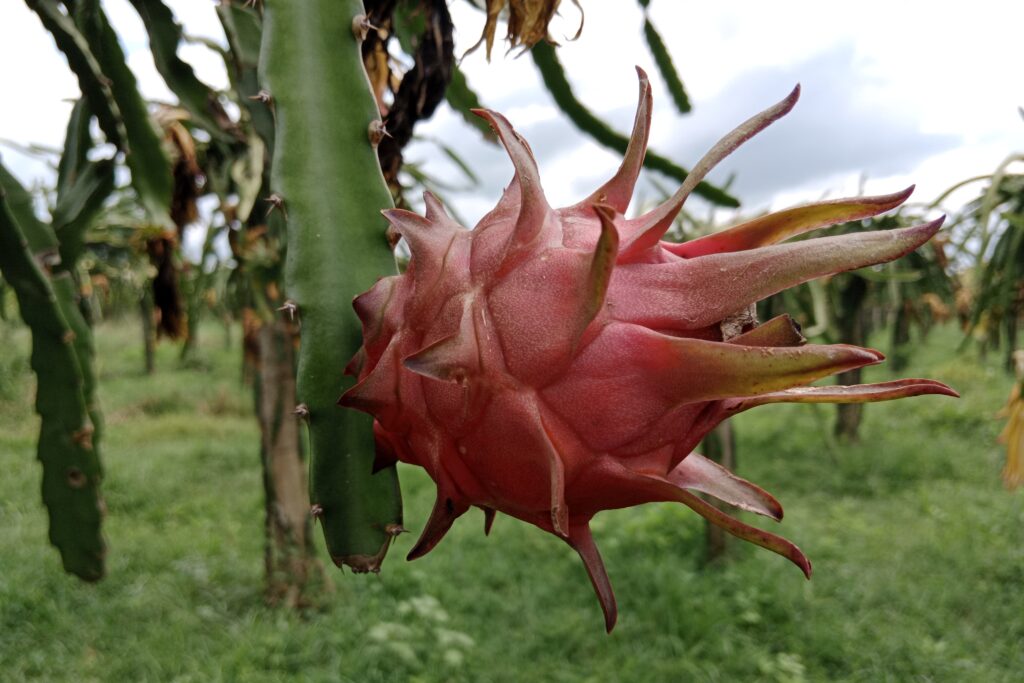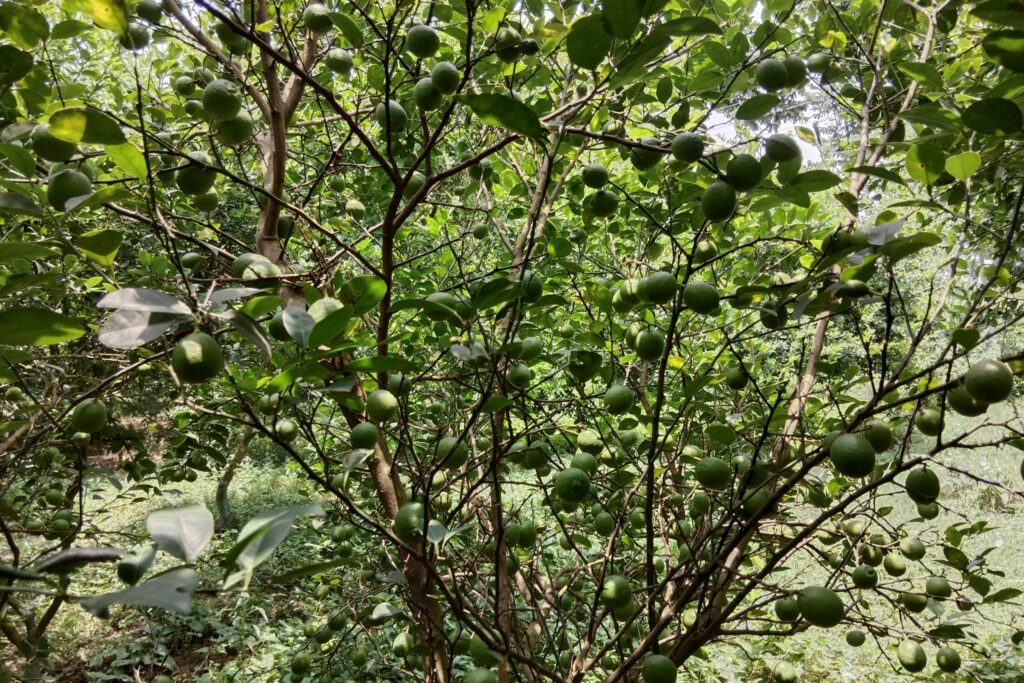Asparagus Farming
Asparagus farming, renowned for its long-term profitability, offers a lucrative opportunity for growers with its ability to produce high-value yields for 10–15 years, or even up to 20 years on fertile soils with proper care. Asparagus (Asparagus officinalis) is celebrated for its tender, nutrient-rich spears, abundant in vitamins A, C, and K, fiber, and antioxidants.
Its cultivation demands meticulous planning, including selecting climate-adapted varieties, preparing well-drained soil, and employing optimal planting techniques such as trenching and proper crown spacing. While initial patience is required—avoiding harvest during the first two years to strengthen roots—the investment pays off significantly.
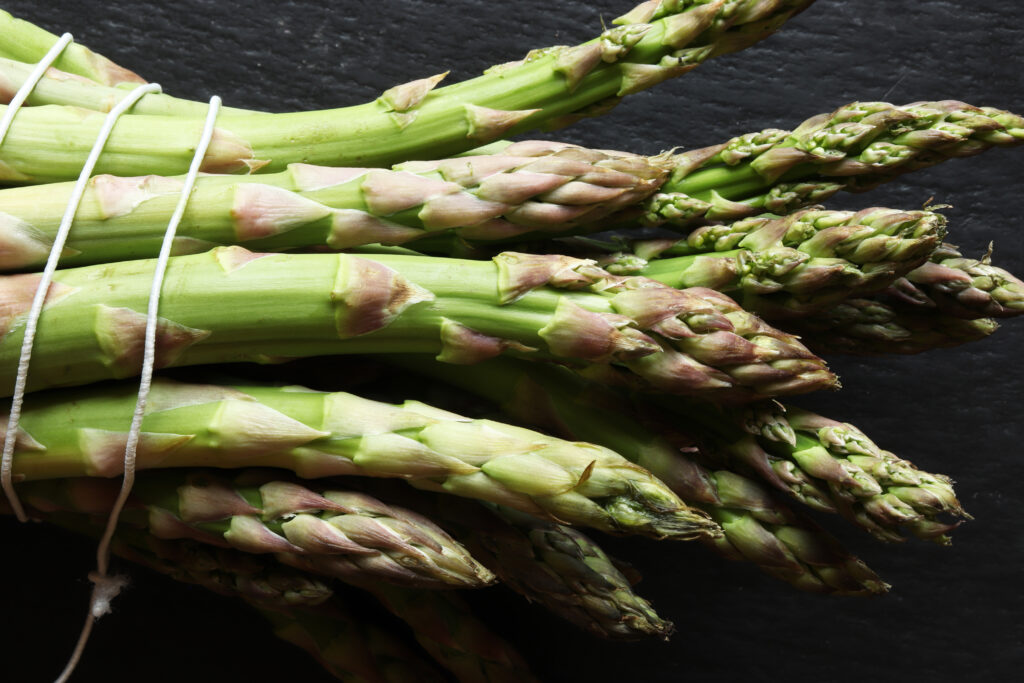
The asparagus farming profit per acre becomes evident starting from Year 4, when the break-even point is reached. Peak profit years (Years 4–10) yield a net income of NRs 630,000 annually, contributing to 62% of the total profit. Even in the late-stage phase (Years 11–15), slightly reduced yields are offset by higher market prices (NRs 600/kg), ensuring annual profits of around NRs 550,000. With a remarkable return on investment (ROI) of 836%, asparagus farming stands out as a highly rewarding agricultural venture.
Land Preparation
Effective soil preparation for asparagus cultivation begins with clearing the site of weeds, debris, and residual vegetation to eliminate competition and disease risks. Next, deep-till the soil to a depth of 30–40 cm to loosen compacted layers, followed by leveling the field to ensure uniform drainage and prevent water stagnation.
To further enhance soil structure and root health, form raised ridges or furrows, which promote aeration and mitigate waterlogging critical consideration, as asparagus thrives only in well-drained soils. Finally, enrich the bed by incorporating organic amendments like compost or well-rotted manure, boosting fertility and microbial activity. Throughout the process, prioritize drainage to safeguard against root rot and ensure long-term bed productivity.
Soil Type
Asparagus crowns require deep plowing and thorough disking to prepare the soil, followed by opening furrows with appropriate implements, adjusting the depth based on soil type: 6–8 inches in loose soils and 3–4 inches in heavy soils to accommodate crown placement. Asparagus thrives in well-drained sandy loam or loamy soils rich in organic matter, which ensures a balance of aeration and moisture retention.
The ideal soil pH of 6.5–7.5 (slightly acidic to neutral) can be achieved by amending alkaline soils with sulfur or acidic soils with lime. A loose, friable texture is critical for unrestricted root development and nutrient uptake, while proper drainage prevents waterlogging. Together, these soil characteristics—optimal pH, crumbly structure, and organic enrichment—form the foundation for vigorous asparagus beds that sustain productivity over decades.
Climatic Requirements
Asparagus flourishes in temperate climates, requiring a distinct seasonal cycle to thrive: a cold dormant period with temperatures consistently below 10°C to reset growth and a subsequent growing phase with daytime warmth of 18–30°C for vigorous spear development. Full sun exposure (6–8 hours daily) is critical for maximizing photosynthesis and ensuring robust yields, while moderate rainfall (approximately 500–750 mm annually) supports growth without oversaturating the soil.
Excessive moisture must be avoided, as waterlogged conditions predispose plants to root rot and fungal diseases like fusarium wilt. By aligning cultivation practices with these climatic and environmental needs—balanced temperatures, ample sunlight, and well-managed irrigation—growers can sustain healthy, productive asparagus beds for over a decade.
Major Cultivars
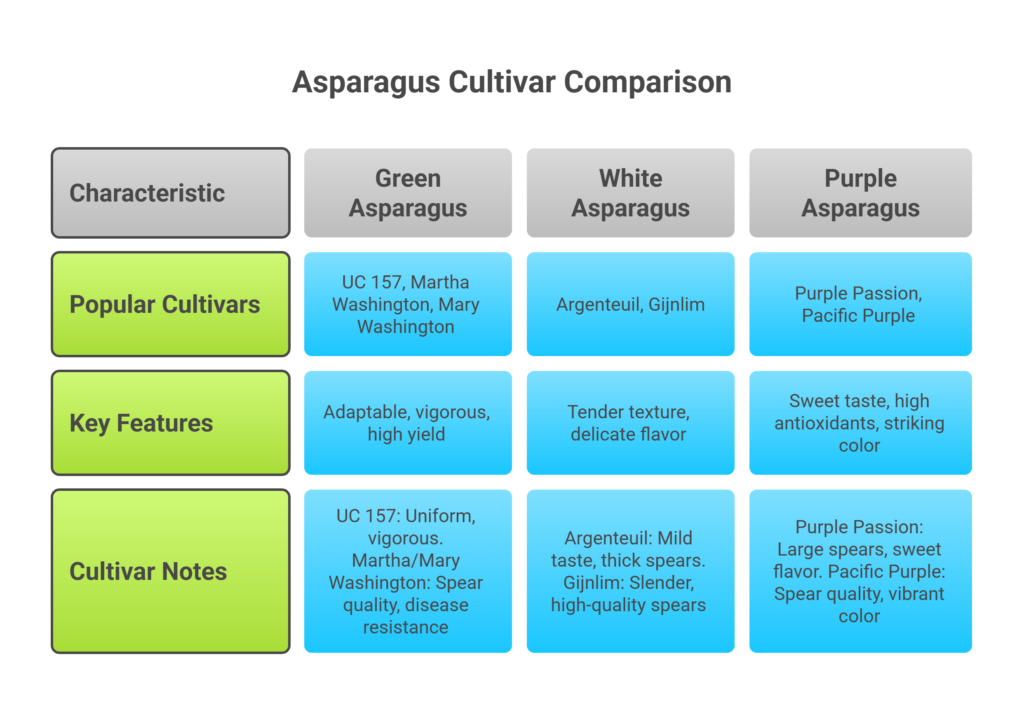
a). Green Varieties
Because of its great demand and many culinary uses, green asparagus is the variety that is grown the most. UC 157, Martha Washington, and Mary Washington are popular green cultivars. These cultivars are renowned for their ability to adapt to various growing environments, vigorous growth, and great yield potential. UC 157 is a contemporary hybrid variety valued for its uniformity and vigor, while Martha Washington and Mary Washington are classic options that provide exceptional spear quality and disease resistance.
b). White Varieties
White asparagus, characterized by its tender texture and delicate flavor, is grown by blanching green asparagus through the exclusion of sunlight during growth. Common white varieties include Argenteuil and Gijnlim. Argenteuil is a heritage variety that has been cultivated for generations, known for its mild taste and thick spears, while Gijnlim is a hybrid variety that produces slender, high-quality spears and is widely preferred in commercial production.
c). Purple Varieties
Purple asparagus stands out for its striking color, sweeter taste, and higher antioxidant content compared to green and white types. Notable purple cultivars include Purple Passion and Pacific Purple. Purple Passion is a popular choice for home gardeners, offering larger spears and a sweeter flavor, making it ideal for fresh consumption. Pacific Purple, a hybrid variety, is valued for its excellent spear quality, vibrant color, and adaptability to various growing conditions.
Planting
a). Planting Season
Asparagus planting timing is strategically aligned with regional climatic conditions to optimize establishment and growth. In temperate zones, the ideal window is early spring (March–April), coinciding with the end of dormancy and soil temperatures rising above 10°C, allowing crowns to root deeply before summer heat.
Planting after the last frost minimizes risk to tender shoots, ensuring young plants avoid cold damage. In tropical or subtropical regions, where distinct seasons are absent, growers often schedule planting during the monsoon period to leverage natural rainfall for initial growth, but meticulous drainage systems—such as raised beds or trenches—are critical to counteract waterlogging from heavy rains.
Regardless of location, precise timing ensures robust root development, synchronizes spear emergence with favorable weather, and sets the stage for the plant’s long-term productivity, which can span over a decade with proper care.
b). Spacing
For permanent field planting, space rows 1.25 meters apart and maintain 45 cm between plants within each row. Sow asparagus seeds at a depth of 2.5–4 cm. When planting crowns, position them in furrows 15–20 cm deep, covering them initially with 5 cm of soil. Throughout the growing season, gradually fill in the furrow by adding soil during cultivation, which also helps suppress weeds.
Proper spacing minimizes competition for nutrients, sunlight, and water while enabling efficient pest management and reducing mechanical damage during fieldwork. By adhering to these guidelines, growers establish a balanced microclimate and root environment, laying the foundation for a productive asparagus bed that can yield reliably for over a decade.
c). Pit Preparation
Pit preparation is a foundational step in asparagus cultivation, ensuring optimal root establishment and long-term vigor. Begin by digging trenches or pits 15–20 cm deep and 20–30 cm wide, dimensions that balance root expansion and ease of maintenance. These trenches allow crowns to be positioned slightly below the soil surface, protecting them from temperature extremes while encouraging upward spear growth.
Prior to planting, enrich each pit with 2–3 kg of compost or well-rotted manure, which boosts soil fertility, enhances microbial activity, and improves moisture retention without compromising drainage—a critical factor for asparagus, which is highly susceptible to root rot in waterlogged conditions. This organic amendment also creates a nutrient-rich microenvironment for young roots, accelerating early growth.
Proper pit preparation, combined with subsequent backfilling as plants mature, ensures robust root systems capable of sustaining the crop’s 10–15-year lifespan, maximizing both yield and spear quality over time.
d). Planting Method
Asparagus planting relies on using robust, one-year-old crowns, which strike an optimal balance between root maturity and transplant resilience, ensuring faster establishment compared to seeds.
To plant, position each crown in a pre-prepared trench or pit with its radiating roots gently spread outward, mimicking a starburst pattern, and buds oriented upward to promote vertical spear growth. Lightly cover the roots with 5–7 cm of loose, amended soil, pressing gently to eliminate air pockets while avoiding compaction—this secures the crown while allowing emerging shoots to penetrate easily.
Over the first growing season, gradually backfill the trench as spears develop, eventually leveling it to the surrounding soil by fall. This method shields young shoots from mechanical damage, encourages deep root expansion, and aligns with the plant’s natural growth habit, laying the groundwork for a prolific bed that matures into sustained harvests within 2–3 years.
e). Number of Plants per Acre
Asparagus planting at a density of approximately 7201 crowns per acre—achieved through a 1.25-meter row spacing and 0.45-meter plant spacing—optimizes yield potential while ensuring adequate space for root development, airflow, and disease management.
Intercropping
Intercropping with asparagus can enhance land productivity while safeguarding the perennial crop’s health, provided companion plants are carefully selected. Low-growing, short-duration vegetables such as cabbage, lettuce, bush beans, or peppers are ideal choices, as their shallow root systems and modest height minimize competition for nutrients, sunlight, and water.
These crops can be cultivated between asparagus rows during the first 1–2 years of establishment, capitalizing on unused space without obstructing fern growth or impeding airflow critical to disease prevention. However, tall or long-season crops like corn, tomatoes, or squash should be avoided, as their extensive root networks and prolonged growing periods risk depleting soil resources, shading asparagus ferns, and disrupting crown development.
Additionally, aggressive intercropping beyond the early establishment phase may stress asparagus plants, compromising their longevity. By prioritizing compatible species and timing, growers can optimize land use efficiency, suppress weeds, and generate supplementary income without jeopardizing the asparagus bed’s 10–15-year productivity.
Irrigation
In order to form deep root systems and maintain spear development, asparagus needs steady hydration, especially during its early growth phase (one to two years after planting). Irrigation should be done every 4–5 days during dry seasons to prevent soil desiccation, and less frequently during rainy seasons to minimize waterlogging, which increases the danger of fungal diseases and root rot.
The best technique is drip irrigation since it reaches the root zone directly, maximizes efficiency (saving 30–50% of waste when compared to overhead systems), and reduces leaf wetness, which might encourage diseases like fusarium wilt or rust. Mature beds still benefit from further watering after establishment during extended droughts, but growers must strike a balance between the crop’s intolerance for standing water and moisture retention, making sure the soil stays well-drained to protect long-term productivity.
Fertilizer and Manure
| Application Stage | Type | Rate/Quantity | Notes |
| At Planting (Basal Application) | Farmyard Manure (FYM) | 20–25 tons/acre | Incorporated into soil during bed preparation; improves organic matter and soil structure. |
| Balanced Fertilizer (NPK 10:20:10) | 200 kg/acre | Applied at trench/pit preparation to provide phosphorus-rich foundation for root development. | |
| Annual Maintenance | Nitrogen Fertilizer (e.g., Urea) | 50–100 kg/acre (split doses) | Split into 2–3 applications during the growing season to support fern growth and energy storage. |
| Micronutrient Supplement | Zinc (Zn) and Boron (B) | Zinc: 5–10 kg/acre (as ZnSO₄); Boron: 1–2 kg/acre (as borax) | Applied annually via soil or foliar spray; prevents deficiencies linked to spear deformities and weak growth. |
Weed Control
Successful asparagus weed management demands a phased, integrated approach to suppress competition across the crop’s lifespan. In the pre-planting year, eradicate perennial weeds like quackgrass through repeated tillage or non-selective herbicides to prevent future infestations. During establishment, deploy the stale seedbed technique: irrigate to trigger weed germination, then apply post-emergence herbicides (e.g., glyphosate) to clear emerged weeds before planting.
After crown placement, use preemergence herbicides (e.g., metolachlor) pre- and post-spear emergence to block weed seed germination. For mature beds, options include spring disking (shallow tillage) followed by residual herbicides (e.g., pendimethalin) before spears emerge, or a sequential “burnoff” with post-emergence herbicides (e.g., paraquat) and residual herbicides to suppress seasonal weeds.
Post-harvest, apply a second residual herbicide to control summer weeds, ensuring minimal competition during fern regrowth. This multi-stage strategy—combining mechanical, chemical, and timing-based tactics—sustains weed-free beds while safeguarding asparagus health and productivity over its 10–15 year cycle.
Pest and Disease Management
Common Pests
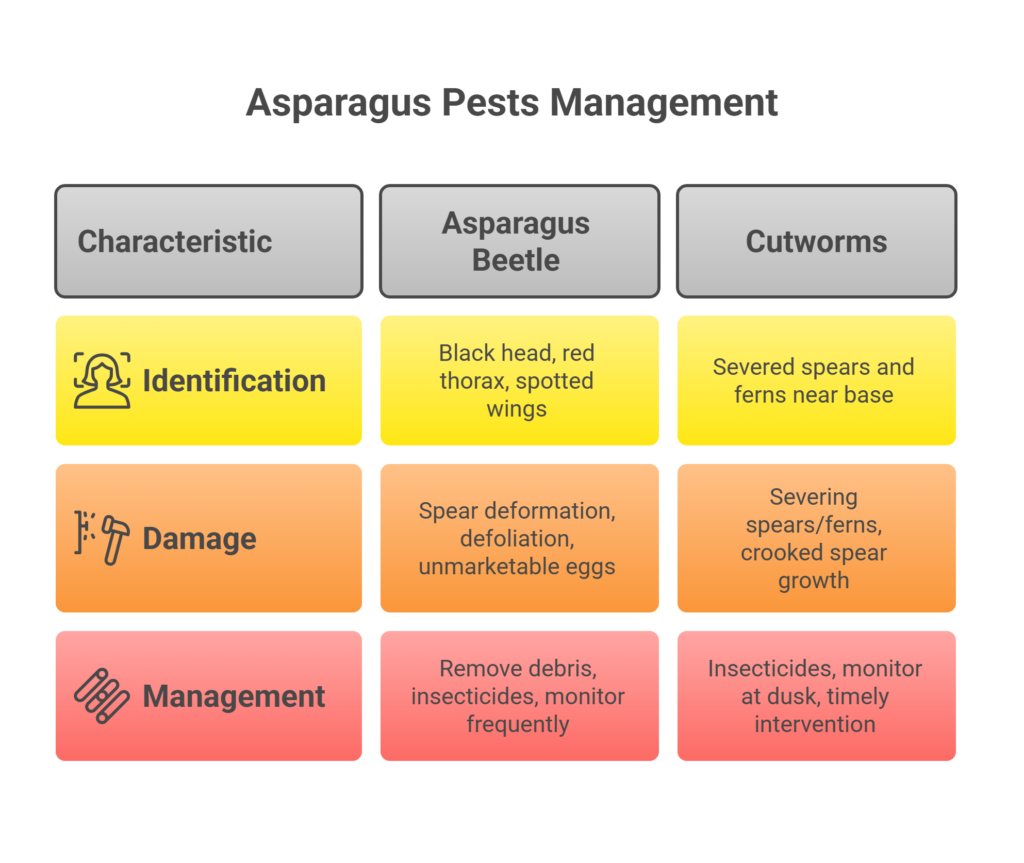
a). Asparagus Beetle
The common asparagus beetles (identifiable by its black head, red thorax, and black-and-red wing covers with white spots) and the less damaging spotted asparagus beetle (orange with black spots) threaten asparagus crops. Adults overwinter in field debris and emerge in spring, feeding on spears and laying upright black eggs, which hatch into foliage-devouring gray larvae within a week.
Larvae cause spear deformation (“shepherd’s crook”) and defoliation, while eggs render spears unmarketable. Management integrates cultural and chemical strategies: remove or burn fern debris in fall to disrupt overwintering (though Minnesota’s early snow may delay this until spring), minimize cover crops that harbor beetles, and harvest spears promptly.
Insecticides are advised if 10% of plants host adults, 50–75% have larvae, or 2% of spears bear eggs. Organic options like spinosad (avoided near harvest) and neem target larvae, while synthetic insecticides (e.g., Assail, Sevin) with short pre-harvest intervals protect spears. Post-harvest, synthetic treatments like Radiant SC control beetles on ferns. Timely intervention, debris management, and monitoring during sunny afternoons—when beetles are active—are critical to curbing infestations across generations.
b). Cutworms
Cutworms, which overwinter in Minnesota, damage asparagus by severing spears and ferns near the base, particularly destructive in early spring when plants are vulnerable. Actively from April, they feed at dusk, necessitating dusk monitoring to detect infestations. Partial feeding causes crooked spear growth, mimicking beetle damage. Chemical control is advised if ≥1 cutworm per 10 crowns is found. Effective synthetic insecticides include permethrin (optimal in cool temperatures), carbaryl, chlorpyrifos, and cyfluthrin, applied as foliar sprays or banded over rows during spear emergence. Spinosad baits target ferns but are unsuitable for spears. Timely intervention prevents significant yield loss.
Common Diseases
a). Fusarium Wilt
Fusarium wilt, a destructive soilborne fungal disease in asparagus, causes stunted growth, yellowing ferns, and crown rot by attacking roots. Prevention focuses on avoiding waterlogged soils (use raised beds, improve drainage) and planting disease-resistant hybrids like ‘Jersey Knight’ or ‘Jersey Giant’. Crop rotation and field hygiene reduce pathogen buildup, as infected plants cannot be cured—prompt removal is critical. Solarization or biofumigation may suppress spores, but resistant varieties and optimal drainage remain the primary defenses.
b). Asparagus Rust
Asparagus rust, a fungal disease marked by orange-yellow pustules on stems and spears that darken to red-brown and eventually black, weakens plants by disrupting photosynthesis and stunting growth. Thriving in humid conditions, spores spread rapidly via wind or rain, leading to yield declines.
Home gardeners should promptly remove and destroy infected foliage, especially before winter, to eliminate overwintering spores. While synthetic fungicides (e.g., chlorothalonil) are available for commercial growers, organic and residential options are limited, making rust-resistant cultivars like ‘Jersey Giant’ or ‘Mary Washington’ the most reliable defense. These varieties, combined with practices like spacing plants for airflow and avoiding overhead irrigation, mitigate outbreaks and sustain bed longevity.
Harvesting
Asparagus harvesting demands strategic timing and techniques to balance yield and plant longevity. Avoid harvesting in the first year to prioritize root establishment; initial harvests begin in the second or third year (spring for 1-year-old crowns), targeting spears 15–20 cm tall.
Cut spears 2 inches above the crown using a knife to avoid crown damage, ensuring green varieties reach 9–10 inches with half their length aboveground. Harvest spans 6–8 weeks annually, with frequency escalating from every 3 days in cool weather to twice daily during rapid growth on warm soils.
Yields progress from 405 kg/acre in the third year to 1215 kg/acre by the fifth year, though cultivar performance varies in early stages. Rapid spear growth under high temperatures necessitates vigilance to maintain quality and prevent overharvesting, ensuring beds remain productive for 10–15 years.
Cost of Investment for Asparagus Farming Per Acre
| S.N. | Category | Cost (NRs) |
| 1 | Land Preparation (plowing, ridges) | 20,000 |
| 2 | Seed Rate per Acre | 20,000 |
| 3 | Labor Costs (transplanting) | 7,000 |
| 4 | Fertilizers and Manure | 15,000 |
| 5 | Irrigation | 8,000 |
| 6 | Weed Control (pre/post-emergence) | 5,000 |
| 7 | Pest & Disease Control | 9,000 |
| 8 | Harvesting | 9,000 |
| 9 | Miscellaneous Costs | 8,000 |
| Total Initial Investment | 101,000 |
Annual maintenance cost of Asparagus Farming Per Acre
The annual maintenance cost for asparagus farming post-establishment ranges from NRs 50,000 per acre, covering recurring expenses essential for sustaining healthy crop growth and productivity. This includes routine tasks such as fertilization (replenishing nitrogen, phosphorus, and potassium), irrigation (ensuring consistent moisture, especially during dry spells), weed control (manual weeding or herbicide applications), and pest/disease management (treatments for common threats like asparagus beetles or Fusarium wilt).
Labor costs for seasonal activities (e.g., pruning, fern management, and post-harvest care) and infrastructure upkeep (e.g., repairing irrigation systems or trellises) also contribute to this range. Additionally, fluctuations in costs may arise from external factors like labor wage variations, climate challenges (e.g., unseasonal rains increasing disease risk), or market-driven price changes in agrochemicals. Efficient management of these expenses is critical to maintaining profitability, as neglecting maintenance can lead to yield declines or crop losses, undermining the long-term returns highlighted in the earlier profit analysis.
Income from Asparagus Farming Per Acre
| Year Range | Yield/Acre (kg) | Market Price (NRs/kg) | Annual Income (NRs) |
| Years 1–2 | 75 | 500 | 37,500 |
| Year 3 | 272 | 500 | 136,000 |
| Years 4–10 | 1,360 | 500 | 680,000 |
| Years 11–15 | 1,000 | 600 | 600,000 |
Analysis of Asparagus Farming Profit Per Acre
| Period | Income (NRs) | Expenses (NRs) | Net Profit (NRs) | Cumulative Profit (NRs) |
| Years 1–2 | 75,000 | 101,000 + 100,000* | -126,000 | -126,000 |
| Year 3 | 136,000 | 50,000 | 86,000 | -40,000 |
| Years 4–10 | 4,760,000 | 350,000 | 4,410,000 | 4,370,000 |
| Years 11–15 | 3,000,000 | 250,000 | 2,750,000 | 7,120,000 |
The break-even point for asparagus farming was reached in Year 4. The peak profit phase occurs during Years 4–10, generating a net income of NRs 630,000 annually, contributing to 62% of the total profit, amounting to NRs 4,410,000. In the late-stage profitability phase (Years 11–15), yields decline slightly; however, higher market prices (NRs 600/kg) sustain annual profits at around NRs 550,000. The overall return on investment (ROI) for asparagus farming is highly favorable, calculated at approximately 836%, based on total profits of NRs 7,120,000 against cumulative costs of NRs 851,000.

